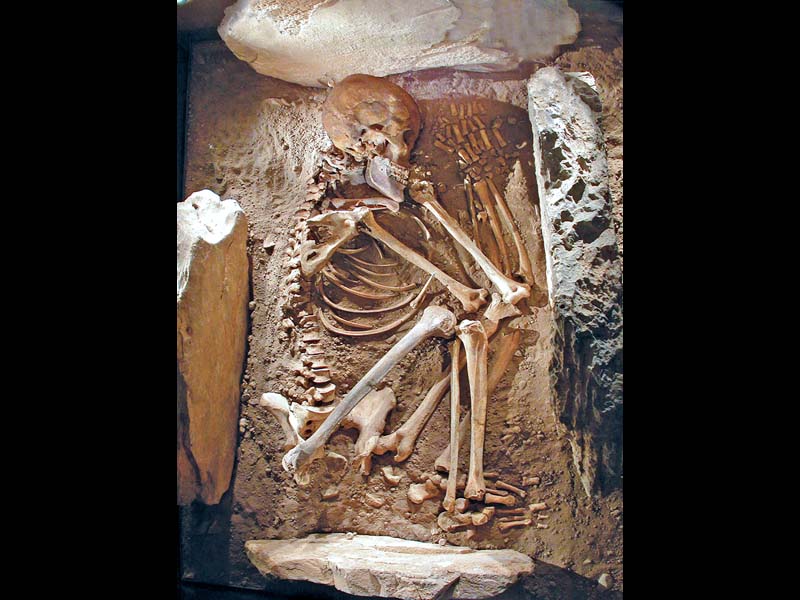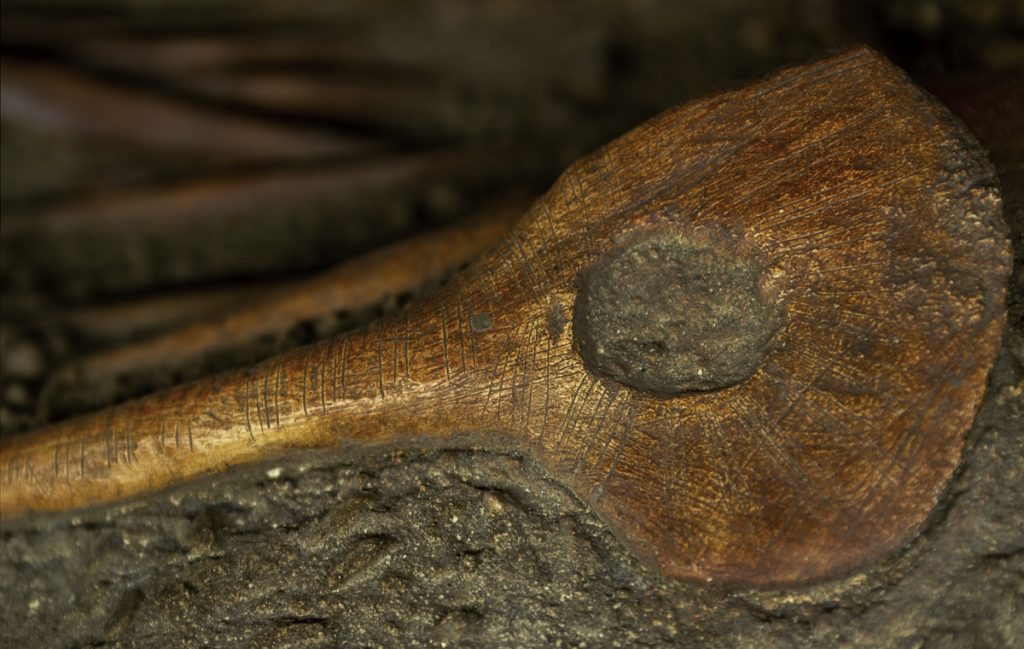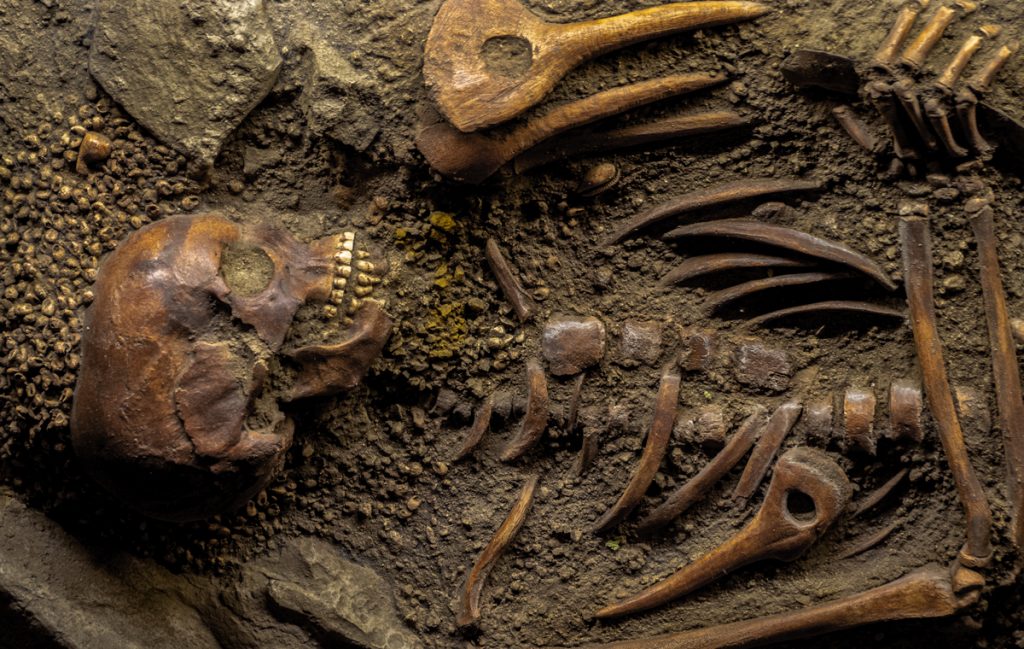Archaeologists excavating in Arene Candide Cave have discovered evidence humans may have ritualistically “killed” pebbles to remove their symbolic power about 12,000 years ago.

 Skeleton of a man discovered at Arene Candide. The man’s head head was surrounded by hundreds of perforated shells
Skeleton of a man discovered at Arene Candide. The man’s head head was surrounded by hundreds of perforated shells
This discovery sheds new light on ancient burial practices and offers evidence of intentional fragmentation of objects in a ritual context some 5,000 years earlier than previously thought.

The Arene Candide Cave, located in northwestern Italy directly overlooking the Mediterranean, midway between Genoa and the French border contains a necropolis of some 20 adults and children. The cave is situated 90 meters above the sea in a steep cliff overlooking a limestone quarry. Arene Candide means “white sands,” referring to a sand dune that once lay against the cliff.
In the 1940s, archaeologists became interested in the cave and first excavations were conducted.

In 1942, a spectacular Mid Upper Palaeolithic (Gravettian) burial ornamented with shells was discovered at Arene Candide.
Nicknamed the Prince (“Il Principe”), the burial contained a skeleton of an adult man whose head was surrounded by hundreds of perforated shells and canines of deer, probably originally forming a kind of cap. The cave has given scientists a unique look at what life what life as far back as 40,000 years ago.

Today the Arene Candide Cave is considered a reference site for the Neolithic and Paleolithic periods in the western Mediterranean.
Many intriguing fins have been made in the cave, but until now no-one bothered to investigate broken pebbles and learn if they were of importance to our ancestors.
Researchers at Université de Montréal, Arizona State University and University of Genoa have now examined 29 pebble fragments recovered from the cave and they tell a very interesting story about ancient burial practices.

A study of the objects reveals that some 12,000 years ago the flat, oblong pebbles were brought up from the beach, used as spatulas to apply ochre paste to decorate the dead, then broken and discarded.
The intent could have been to “kill” the tools, thereby “discharging them of their symbolic power” as objects that had come into contact with the deceased, said Julien Riel-Salvatore, an associate Professor of anthropology at UdeM who directed the excavations at the site that yielded the pebbles.